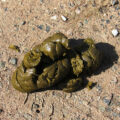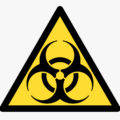
Roundworms Are What Type Of Biohazard?
The correct answer to the question above is: They are contagious biohazard. They pose threat to human’s health by causing Infection.
Biological hazards are organisms, or by-products from an organism, that are harmful or potentially harmful to human beings. They include pathogenic bacteria, viruses and parasites, and also toxins (poisons) that are produced by organisms. Biological hazards are the cause of the majority of human diseases. For example, bacteria cause cholera, tuberculosis, leprosy, relapsing fever and many diarrhoeal diseases; viruses are responsible for hepatitis B and C, HIV, measles and polio; and there are many diseases caused by parasites.
A parasite is any organism that lives on or in another organism, called the host, and causes damage, ill health or even death to the host. Some human parasites are external and live on the skin and hair, for example, mites that cause scabies. Internal parasites living inside the body, include protozoa and helminths.
Protozoan parasites are single-celled organisms that enter the body either by ingestion or via the bite of an infected insect. Malaria, sleeping sickness and leishmaniasis are examples of diseases caused by protozoan parasites introduced by insect bites; amoebic dysentery and giardiasis result from drinking or eating contaminated water or food.
Helminths are parasitic worms that live inside the body. Several helminths have complicated life cycles involving humans and other animals as secondary hosts. They have different routes of entry into the human body depending on the type of worm including ingestion with food or water, the faeco-oral route, insect bites and penetration through the skin. ‘Helminth’ is the general term used to describe several different types of parasitic worm. There are three main groups: tapeworms, roundworms and flukes. Tapeworms may be ingested with food, especially under-cooked meat, or with water or soil contaminated with faeces. Roundworms, also called nematodes, are responsible for many different diseases including ascariasis, dracunculiasis (guinea worm), filariasis, hookworm, onchocerciasis (river blindness), trichinosis and trichuriasis (whipworm). A type of fluke is the cause of schistosomiasis, also known as bilharzia. People become infected with schistosomiasis, not through food, but by standing or swimming in water that contains the immature form of the fluke; these are released into the water from the snail secondary host. The fluke gets into the water and the snail from the excreta of infected people.
Biological hazards arise from working with infected people or animals, or handling infectious waste and body fluids, as well as contact with unsafe water, food and waste. The hazards may occur in the home, at school or at work. In particular, work in hospitals, hotel and hospital laundries, laboratories, veterinary offices and nursing homes may expose someone to biological hazards.
How To Control Biological Hazards
Engineering controls reduce risk through physical means. Some examples of engineering controls for biological hazards are: regular cleaning of the workplace, pest prevention/extermination, requiring that safety equipment be used and worn, and proper disposal of materials and items that may pose a biological risk.
There are three steps to hazard control.
Step 1: Identify the hazard. This job can, and should, be done by anyone at a workplace.
Step 2: Assess the risk. The next job is to see how much of a risk the hazard poses.
Step 3: Make the change. The best thing that can be done with a hazard is to eliminate it.




